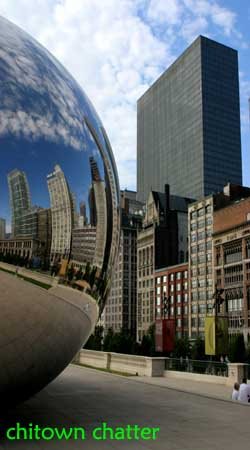 Yokohama is Japan's second largest city and a major port hub situated on the Tokyo Bay. I got my first close-up look (excluding the plane ride) at the western side of the Pacific here.
Yokohama is Japan's second largest city and a major port hub situated on the Tokyo Bay. I got my first close-up look (excluding the plane ride) at the western side of the Pacific here. The city also boasts Landmark Tower, which at 296 m (971 ft) is Japan's tallest building. It also includes the world's fastest elevator at 750 m (2,500 ft) per minute.
The city also boasts Landmark Tower, which at 296 m (971 ft) is Japan's tallest building. It also includes the world's fastest elevator at 750 m (2,500 ft) per minute. Really though, I was mostly interested in investigating their Chinatown, which is the largest concentration of Chinese in Japan, with about 2,500 inhabitants. The neighborhood is ringed by a series of pagoda-topped gates. Ah, feels like home.
Really though, I was mostly interested in investigating their Chinatown, which is the largest concentration of Chinese in Japan, with about 2,500 inhabitants. The neighborhood is ringed by a series of pagoda-topped gates. Ah, feels like home.I have been to quite a few Chinatowns, but this one is characterized by the popularity of mooncakes and steamed buns (bao). While these are also sold in other Chinatowns, there aren't generally whole shops devoted to all sorts of mooncakes, momo (peach) cakes and buns.
 Of course, this being Japan, we had to come up with a way to make bao cute. Enter the Panda bun.
Of course, this being Japan, we had to come up with a way to make bao cute. Enter the Panda bun. The centerpiece of Yokohama's Chinatown is Kantei-byo Temple, built in 1887.
The centerpiece of Yokohama's Chinatown is Kantei-byo Temple, built in 1887. Oh, one more thing that is very prevalent here: pandas. There were entire shops dedicated to selling panda paraphernalia, from socks to umbrellas to backpacks, with hordes of Japanese schoolgirls ogling and shrieking in excitement. Are the Chinese catering to Japanese tastes, or do the Japanese really think China = Panda? Then again, Cadie did determine that everyone <3>
Oh, one more thing that is very prevalent here: pandas. There were entire shops dedicated to selling panda paraphernalia, from socks to umbrellas to backpacks, with hordes of Japanese schoolgirls ogling and shrieking in excitement. Are the Chinese catering to Japanese tastes, or do the Japanese really think China = Panda? Then again, Cadie did determine that everyone <3> Afterwards, I headed to the Shin Yokohama Ramen Museum. Yes, Japan's museum ecosystem is so broad and diverse, it can sustain a museum on ramen. Upstairs, there were displays (unfortunately all in Japanese) about the invention and history of ramen. Apparently, there are 12 types of ramen noodles.
Afterwards, I headed to the Shin Yokohama Ramen Museum. Yes, Japan's museum ecosystem is so broad and diverse, it can sustain a museum on ramen. Upstairs, there were displays (unfortunately all in Japanese) about the invention and history of ramen. Apparently, there are 12 types of ramen noodles.In case you are wondering, ramen in Japan has very little to do with American ramen that comes in packets of 6 for a dollar. Here, ramen is a noodle soup that is accented with slices of pork, fish balls, seaweed or other additions. There are tons of restaurants dedicated to serving only ramen; in fact, I think this may be the most popular type of restaurant I've seen in Tokyo.
 Downstairs is a ramen restaurant mall, where you can try 9 styles of ramen from different areas of Japan. The decor is modeled after Tokyo in the year Showa 33 (1958), which was the year that instant ramen was invented. As it turns out, the replication looked almost exactly like Kawagoe from the day before, complete with loaves of fu for sale.
Downstairs is a ramen restaurant mall, where you can try 9 styles of ramen from different areas of Japan. The decor is modeled after Tokyo in the year Showa 33 (1958), which was the year that instant ramen was invented. As it turns out, the replication looked almost exactly like Kawagoe from the day before, complete with loaves of fu for sale.Ramen was ordered via vending machines (of course), and you could get full size portions for ¥700-900 and mini (ミニ) half-size portions for ¥500-600.








No comments:
Post a Comment